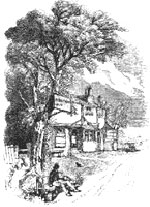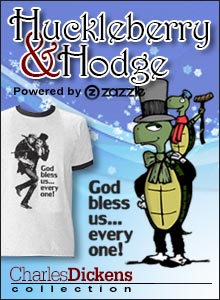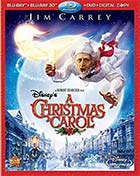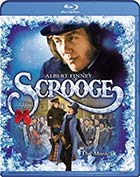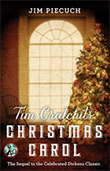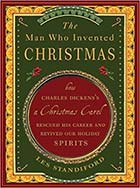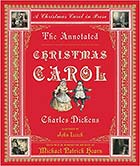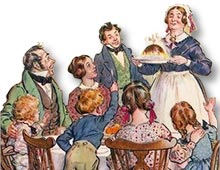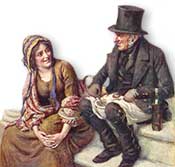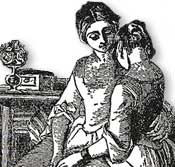Charles Dickens'
Christmas Books
Although subsequent Christmas books sold well at the time of their initial release, they have not enjoyed the staying power of A Christmas Carol (Schlicke, 1999, p. 97).
The Christmas books, particularly The Chimes, the Cricket, and the Carol, were the centerpiece of Dickens' public reading tours in the 1850s and 60s with A Christmas Carol far and away the most popular with audiences.
Dickens discontinued the Christmas books after The Haunted Man, devoting his "spare" time to the publication of weekly magazines, Household Words (1850-1858) and All the Year Round (1859-1867), in which he included annual Christmas stories. These Christmas stories, together with the Christmas books, forever linked Dickens with the celebration of Christmas.
A Christmas Carol - 1843
First of the Christmas books and Charles Dickens' most enduring tale. See the A Christmas Carol and Dickens and Christmas pages on this site.
The Chimes - 1844
Written while Charles Dickens and his family were living in Genoa, Italy, Dickens confessed that he missed the inspiration of the London streets. The story centers around Trotty Veck, a poor ticket porter, whose outlook is converted from despair to hope by the spirits of the chimes on New Year's Eve.The Chimes is more topical than A Christmas Carol, citing social problems more specific to the 1840s, it therefore lost some of its relevance after the initial release.
Characters
Character descriptions contain spoilers
|
Veck, Toby (Trotty) Meg Richard Cute, Alderman Filer, Mr |
Bowley, Sir Joseph Fish, Mr Fern, Will Lillian Chickenstalker, Mrs |
The Cricket on the Hearth - 1845
The story centers on John and Dot Peerybingle whose marriage is threatened by a wide difference in their ages. When confronted with the possibility of Dot's infidelity John consults the spirit of the Cricket on the Hearth whose chirping Dot has said brings luck. The cricket assures John that all will be well. In the end the misunderstanding is cleared up and the couple's happiness is restored. The story also features the Scrooge-like conversion of hard-hearted toymaker Tackleton.Characters
Character descriptions contain spoilers
|
Fielding, May Fielding, Mrs Peerybingle, John Peerybingle, Mary (Dot) Plummer, Bertha |
Plummer, Caleb Plummer, Edward Slowboy, Tilly Tackleton |
The Battle of Life - 1846
Like previous Christmas books, The Battle of Life centers on a change of heart, but this time without the aid of supernatural beings. Doctor Jeddler's daughters make sacrifices in love which convert their father's cynical view of life.The least popular of the Christmas books, most critics found it flawed. It is a charming little story...until the ending, which leaves the reader feeling that Dickens just didn't have room to develop it properly under the constraints of the Christmas book format.
The character of Clemency Newcome produces the most enjoyable part of the book, many feel she foreshadowed Clara Peggotty from David Copperfield.
Characters
Character descriptions contain spoilers
|
Jeddler, Dr. Anthony Jeddler, Grace Jeddler, Marion Jeddler, Martha Heathfield, Alfred |
Britain, Benjamin Newcome, Clemency Snitchy and Craggs Warden, Michael |
The Haunted Man - 1848
In Charles Dickens' last Christmas book he returns to the Christmas Carol-like format that began the series in 1843. Mr Redlaw is a chemistry professor tormented by painful memories. He is visited on Christmas Eve by a phantom, a double of himself, who bestows the gift of forgetting these painful memories. The catch is that others who come into contact with the professor also lose remembrance of past hurts and sorrows.Redlaw passes on this gift to members of the Swidger family, custodians at the university. Philip Swidger, 87-year-old patriarch of the family whose present happiness is based on remembrance of the past, is reduced to senility at Redlaw's touch.
Likewise, the Cratchit-like Tetterby family, touched by Redlaw's gift, become callous and querulous.
In the end the gift is reversed by the inherent goodness of Milly Swidger, whose painful memories of her lost child are the source of her benevolence.
The theme of this Christmas book can be summed up in Philip Swidger's refrain "Lord, keep my memory green" (Christmas Books-The Haunted Man, p. 326).
Characters
Character descriptions contain spoilers
|
Redlaw Swidger, William Swidger, Milly |
Swidger, Philip Tetterby family Longford, Edmund |
- Sketches by Boz |
- Pickwick |
- Oliver Twist |
- Nickleby |
- Old Curiosity Shop |
- Barnaby Rudge |
- Chuzzlewit |
- Christmas Carol |
- Christmas Books |
- American Notes |
- Pictures from Italy |
- Dombey and Son |
- Copperfield |
- Bleak House |
- Hard Times |
- Little Dorrit |
- Tale of Two Cities |
- Great Expectations |
- Our Mutual Friend |
- Edwin Drood |
- Minor Works |
- The Uncommercial Traveller |
- Short Stories

